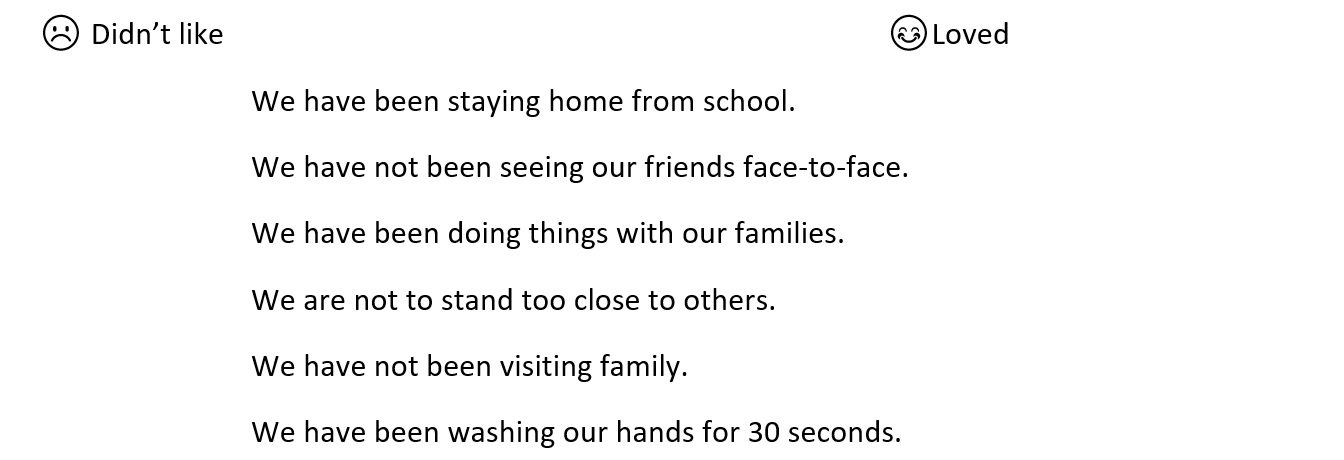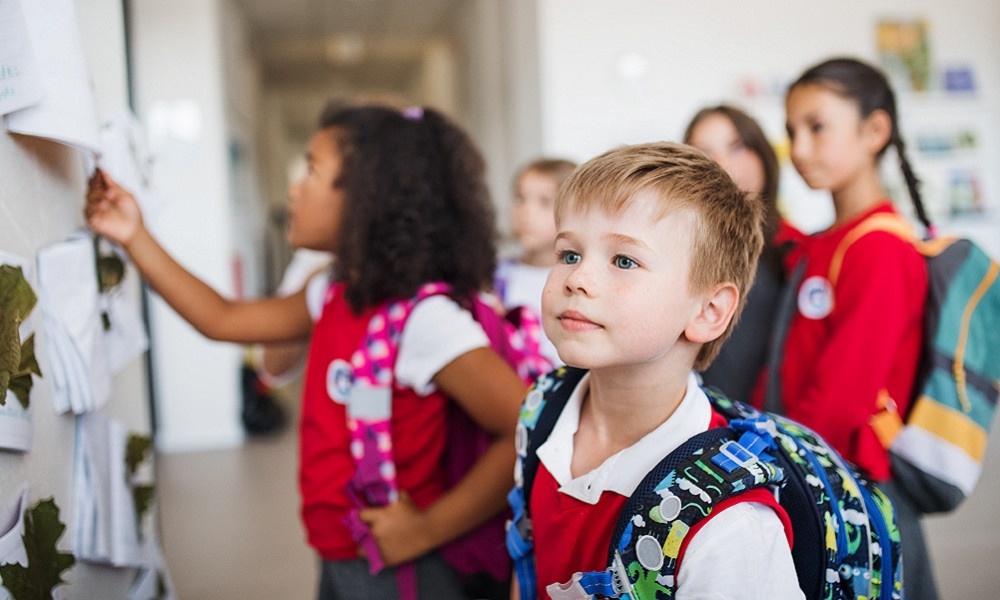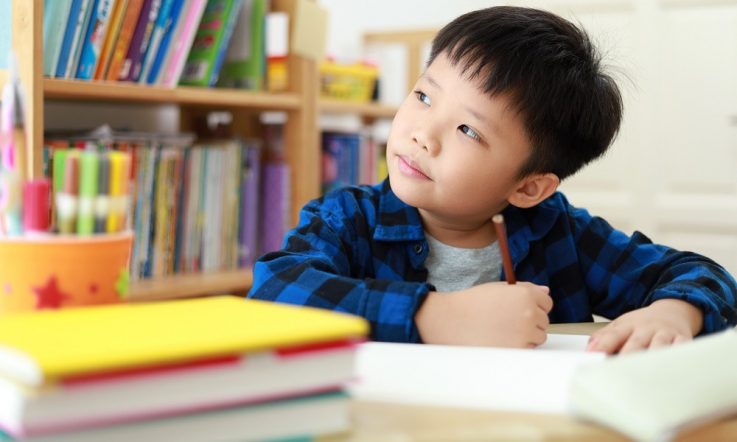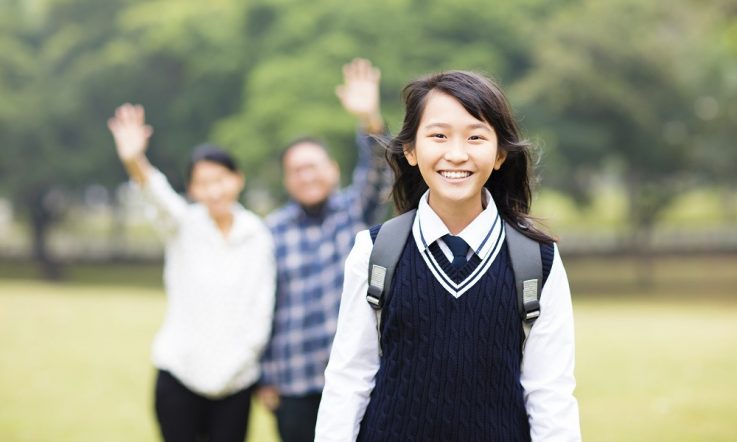Depending on which state or territory you're in, the impending or current return to full-time, face-to-face learning in schools is an exciting time for students and teachers and, no doubt, a blessed relief for many parents and carers. It is also a critical time regarding maximising learning opportunities, both during and after this transition.
We are changed and different now, and we can move forward together, being kind and supportive to all.
School situations vary within and across states and territories. At the time of writing, different levels of restriction are operating for the return to classroom teaching; though in almost all cases, the transition is occurring much earlier than expected.
Here are some tips and suggestions to support school communities in managing this transition back to school for all students, and particularly those with additional needs.
Routine, structure and communication
A return, as quickly as possible, to regular school and learning routines will be like a comfy warm winter blanket for all students, particularly our students with additional needs. For example, many families of students with autism would attest that the almost daily changes in ‘rules' regarding COVID-19 have been an absolute minefield. This may ring true for many students, with or without additional needs, who thrive off known boundaries and predictable daily routines. Using a familiar communication method, like a newsletter or email, to inform families of what will be the same and what will be different with regard to systems, structures and processes, may be a welcome way for parents and carers to prepare students for their return to class.
Harness self-isolation experiences to build student confidence
The unprecedented level of responsibility that school students of all ages have had to embrace, is worth both celebrating and harnessing. Smart operators will use quality student output produced during the study at home period as a vehicle for substantive teaching and learning conversations. This feedback can be used to instil confidence in students' self-direction capabilities. Moreover, building on these new levels of confidence and autonomy is another way for teachers to show they genuinely care for their students, creating a safe and supportive learning environment where students are challenged to strive for success.
Planning for inclusion and reducing anxiety
Clear communication and planning are ways to reduce anxiety around the transition process for everyone. All educators, especially school leaders, taking the time to think and plan for the integration of COVID-19 restrictions within previously established routines and learning structures will ensure as ‘normal' a school experience as possible for students. At an instructional level, teachers allowing multiple entry points into any new or newly adapted activities (rather than opt in or opt out) will help to reduce student anxieties. Planning for inclusion by designing teaching and learning activities to cater for the needs all students has never been more important than now.
For example, students with effective access to technology at home (and hence, online delivery of learning) may have progressed well in their learning during the study at home period, while other students with no, or limited access, and/or students with additional learning needs, may have made limited progress. One might coin this the ‘COVID Diversity Gap', and it will only serve to exacerbate existing variance between our least and most needy students upon their return to class. Hence, the need to differentiate classroom learning will be greater now than before. Importantly, the impact of this increased learning gap may extend well beyond students' perception of their academic progress, negatively impacting on their wellbeing. By showing empathy to our students (as in ‘we're all in this together') and acknowledging the difficulties faced during self-isolation, we can support them.
Other examples that would assist all students, especially those with additional needs, include:
- sharing pre-prepared, and adapted visual timetables prior to the return to school;
- clearly communicating information to families regarding COVID-19 procedures and protocols;
- teachers using their professional knowledge of students to prepare and support those that might be more anxious; and,
- staff just being there for students when all they need might need is for someone to listen.
Share and explore home learning experiences
Making time to explore and learn about our students' experiences, particularly home-learning experiences, will be an important part of this initial transition – both for pastoral and teaching and learning reasons. Our students will need time and space to readjust to school-based learning. For some, this transition will be filled with as much anxiety as the first day of school or the school year. Being prepared and catering for their potential needs should be one of our highest priorities.
We can provide multiple opportunities for students to explore their home-school experiences to support this transition. We can use class discussions during morning or yarning circle; while, writing, poetry, music, art, dance, drama, etc. would all provide authentic therapeutic opportunities.
We all learn by thinking about, and reflecting on, things we have experienced and done in our lives. A simple visual for younger children, for example, could be:

These sentences acknowledge how things have changed. As teachers, we can write our own sentences, ensuring some will be worded in the positive, and others in the negative. Students could draw pictures showing what their family experience of self-isolation was like in response to these types of sentences. Younger students could use a show of hands or a smiley face to show how these questions (or similar) make them feel. Older students may be able to use these as prompts for writing about their feelings and experiences during self-isolation. Discussion could be deepened or extended by adding the word ‘because' to the end of each sentence, or simply asking ‘Why?'. This may prompt thinking, reasoning, learning and writing more complex ideas and reasons.
We could then examine some of these work samples and/or interview students regarding their shared experiences from a teaching and learning perspective, to gain insight into what students have learnt about the way they best learn (self-monitoring, reflection, metacognitive processes).
Simply talking with children about their understandings and what they know about COVID is important. This is not a ‘one-off' chat, children learn with repeated chats over time. COVID Conversations: Helping children understand, written by one of the authors of this article, is a series of short episodes intended to help teachers, parents, grandparents and children talk about what has happened and learn more. These conversations include some typical questions our students and our children might ask, and possible ways we can talk and learn about all these changes. There are also suggested activities that teachers could use as discussion starters or for writing tasks.
A new school-family relationship
During the study at home period, all teachers, especially teachers of students with additional needs, have needed to take care not to overload, exhaust and frustrate parents and carers with too many demands to support their children's learning. COVID-19 has created so many complexities, insecurities, and anxieties. We have all been trying to balance and deal with the impacts on our own work from home lives. Happily, it would appear, this has created more opportunities for parent and carer understanding and empathy for the work of teachers, and vice versa. There may never have been a better time for schools to harness this new depth of relationship to support student learning.
This is a genuine opportunity to consolidate, and even extend, our communication strategies and structures with parents and carers. For example, greater parent and carer understanding of content could facilitate establishment of more meaningful student learning goals and better support systems at home. For students with significant additional needs, learning support teams and processes provide an obvious vehicle to harness this increased shared understanding with parents and carers to further refine, modify and adapt individual learning programs.
A child with physical or hygiene needs, for example, may have had to operate with greater independence in their daily routines during the study from home period. Via a timely review meeting, this new independence could be incorporated into adjusted school routines and enhanced IEP (Individual Education Plan) goals. Similarly, a child with a highly adapted or differentiated program that required specialised equipment and technology prior to COVID-19, may have found new ways to use this equipment beyond the school context – a tremendous opportunity exists to harness these new skills in an adapted learning plan going forward.
UPDATE May 19, 2020:
The authors have now made a recent presentation available to readers, which includes suggested links to AITSL standards to suit your school context. Download the file (PDF, 4MB)
What opportunities will you provide for students to reflect on and discuss their home learning experiences? How will you ensure they are accessible for all students?
Think about the strengths of your individual students during the home learning period. How can you harness and build on these capabilities in the classroom?



